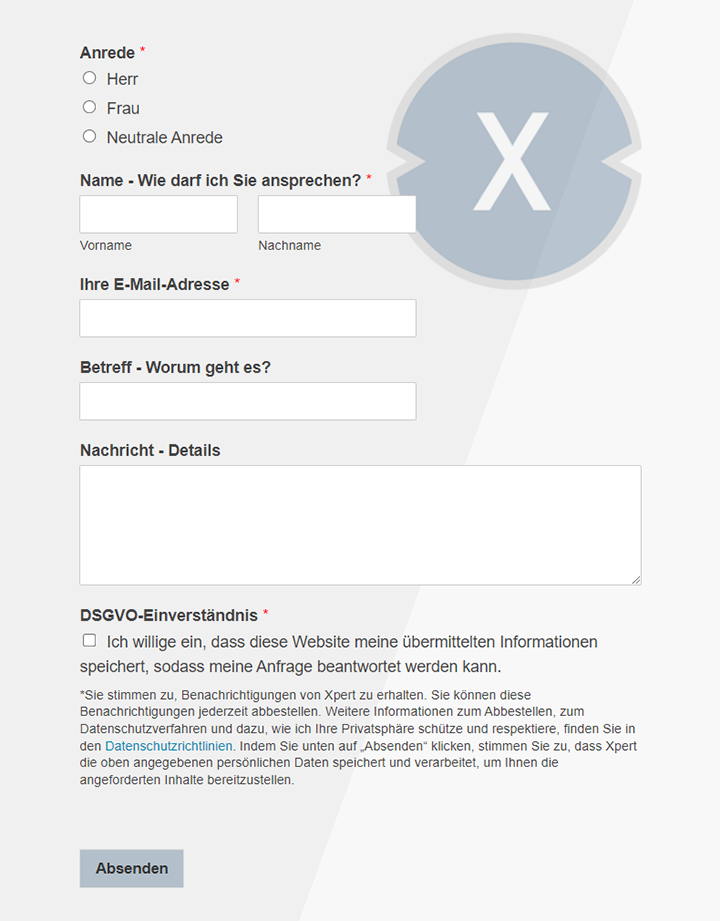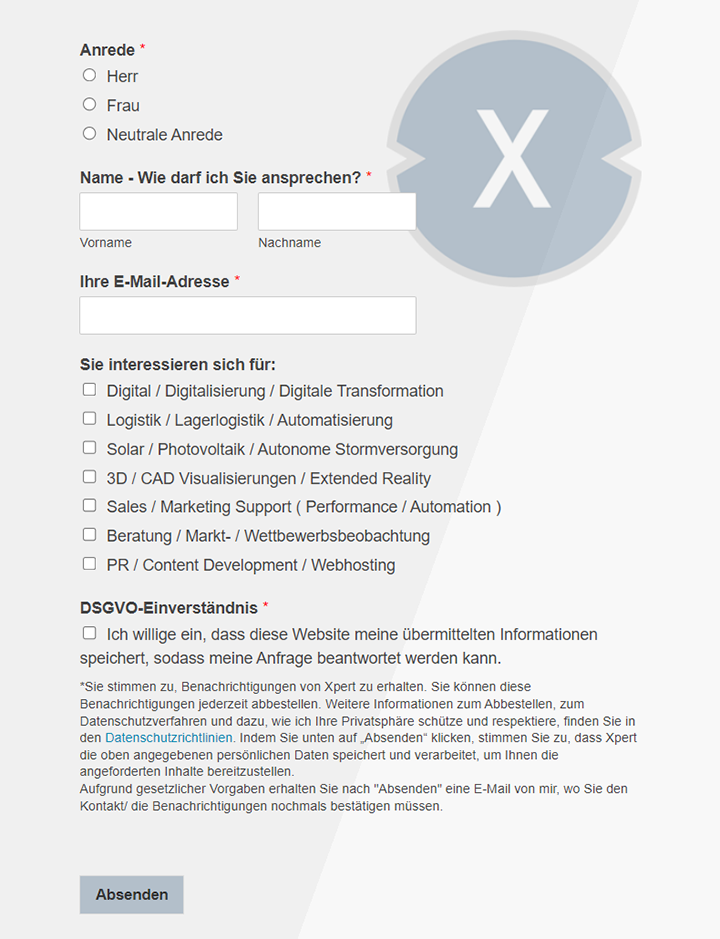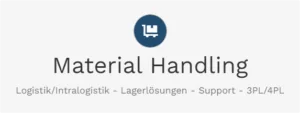First major OpenAI AI study: Who really uses ChatGPT? – and for what? A detailed analysis
Xpert pre-release
Language selection 📢
Published on: September 16, 2025 / Updated on: September 16, 2025 – Author: Konrad Wolfenstein

First major OpenAI study: Who really uses ChatGPT? – and for what? A detailed analysis – Creative image: Xpert.Digital
The big surprise: Not men, but women dominate ChatGPT – a new study reveals why
Who really uses ChatGPT? The 7 most important findings from the first major OpenAI study
Forget programming: What most people really use ChatGPT for will surprise you
Since its launch, ChatGPT has become a global phenomenon, reaching hundreds of millions of people every week. But behind the impressive user numbers lies a crucial question of central importance to business, politics, and society: Who are these people really—and what exactly do they use the powerful language model for in everyday life? A new, comprehensive study by OpenAI, based on the analysis of 1.5 million anonymized conversation transcripts, now provides detailed and sometimes astonishing answers for the first time.
The results turn many common assumptions on their head. Contrary to the stereotype of the tech-savvy male user, ChatGPT is now predominantly dominated by women. Use has shifted massively from professional to private use, where practical everyday questions and text optimization are the focus rather than complex programming tasks. At the same time, the analysis reveals a growing global dynamic: While growth is slowing in Europe and North America, user numbers are exploding in Asia, Latin America, and Africa. This development has far-reaching consequences – not only for OpenAI, but also for the search engine giant Google, whose core business is directly challenged by this new form of information search.
This article analyzes the study's key findings, highlights demographic shifts, and explains what the true ChatGPT revolution means for all of us.
Why does the actual use of ChatGPT deserve a deeper look?
Since its launch in November 2022, ChatGPT has become a mass phenomenon, reaching around 700 million people weekly, according to OpenAI. However, for developers, companies, policymakers, and society, it's less the sheer number of users that's of interest than the question of who specifically uses the service, for what purposes, and in what situations. Only on this basis can meaningful business models, data protection guidelines, and educational concepts be derived. A recently published 62-page study by OpenAI now provides, for the first time, a detailed look at real conversation transcripts, thus providing rich material for systematic analysis.
Framework of the study
Under what circumstances was the study conducted and published?
The study was conducted between May 2024 and June 2025. It is based on approximately 1.5 million anonymized conversation transcripts that were automatically analyzed. OpenAI made the results available to the Washington Post to stimulate a public debate. Peer review is not yet available; nevertheless, the scope and transparency of the data are remarkable, as previous statements were mostly based on smaller surveys or internal estimates. With this disclosure, OpenAI aims to demonstrate that its model can be used responsibly and that it is willing to make research accessible before final scientific reviews are completed.
Methodology and database
How was the data collected, cleaned and classified?
Data collection was conducted server-side, with personal information removed or pseudonymized to protect privacy. OpenAI then used both rule-based filtering and machine clustering to identify recurring conversation patterns. Topics were grouped based on key terms and semantic similarities. In total, the researchers identified fourteen main categories, the most common of which are described in detail in the report. Classification into private and professional contexts was achieved by defining certain signal words—for example, "report," "presentation," or "boss"—as indicating work-related use. To minimize bias, regional data was normalized by population size and accounted for varying internet penetration.
Key demographic data
What basic demographic trends can be identified?
The study confirms that ChatGPT now reaches a global audience. Almost half of all conversations originate from users between 18 and 25 years old. This age group demonstrates a high digital affinity and appears to be experimenting particularly intensively with new tools. Also noteworthy is the proportion of users from low-income regions, which is growing faster than in wealthy countries. This could be due to the fact that ChatGPT offers low-cost information that is difficult to access elsewhere. While previous internal figures suggested a predominance of North American users, the new data suggest that Latin America, South Asia, and Southeast Asia are now leading the growth rates. While Europe and North America remain large markets, relative growth there has slowed.
Gender distribution
What role does the gender of users play and how has the distribution changed?
A particularly surprising result concerns the gender distribution. Immediately after its launch in 2022, first names that are statistically considered male dominated, accounting for around 80 percent of users. Today, the proportion of users with female first names is 52 percent. This means that ChatGPT is now predominantly used by women. Attempts to explain this range from growing interest in everyday and educational applications to a changing perception of the technology as reliable and helpful, rather than purely experimental. Whether this development will impact long-term preferences in the design of language models remains to be seen, but companies must prepare for a more diverse target group than previously assumed.
Age structure and regional differences
How are usage rates distributed across age groups and continents?
The 18- to 25-year-old age group accounts for almost 47 percent of all analyzed conversations. Users aged 45 and over account for around nine percent—a figure that nevertheless represents a considerable volume considering that this segment is often more hesitant about new technologies. Regionally, Asia is now slightly ahead of North America in terms of weekly active users. While Africa still records lower absolute numbers, growth rates are highest there, supported by the increasing expansion of mobile broadband networks. Europe occupies a middle position: stable growth, but less dynamic than in emerging markets. This results in an organizational challenge for OpenAI to reflect linguistic and cultural diversity in training.
Private versus professional use
Has the relationship between private and professional use shifted?
Initially, private and professional use were balanced. By June 2025, the picture had changed significantly: Around 73 percent of all conversations concerned private matters. There are many reasons for this. First, ChatGPT is becoming more popular among schoolchildren, students, and hobby users who primarily ask everyday-related questions. Second, many companies have now issued internal guidelines for the use of generative AI, which shifts chats with sensitive content to internal, often unrecorded systems. Third, some companies offer their own fine-tuning instances with stricter data protection, so that public usage figures no longer reflect the entire professional spectrum.
Practical tips and everyday support
What role does ChatGPT play in solving everyday problems?
The most prominent category within private use, at 28.3 percent, is obtaining practical tips. These include cooking recipes, repair instructions, or study strategies for exams. Users appreciate the fast, dialog-based format, which a traditional search engine offers only to a limited extent. The emphasis is on interactivity: For example, anyone who wants to know how to prepare a particular dish using existing ingredients receives step-by-step suggestions and can ask questions. For educational institutions, this raises questions about plagiarism and self-help, as students can have ChatGPT explain solutions without having to go through the entire thought process themselves.
A new dimension of digital transformation with 'Managed AI' (Artificial Intelligence) - Platform & B2B Solution | Xpert Consulting

A new dimension of digital transformation with 'Managed AI' (Artificial Intelligence) – Platform & B2B Solution | Xpert Consulting - Image: Xpert.Digital
Here you will learn how your company can implement customized AI solutions quickly, securely, and without high entry barriers.
A Managed AI Platform is your all-round, worry-free package for artificial intelligence. Instead of dealing with complex technology, expensive infrastructure, and lengthy development processes, you receive a turnkey solution tailored to your needs from a specialized partner – often within a few days.
The key benefits at a glance:
⚡ Fast implementation: From idea to operational application in days, not months. We deliver practical solutions that create immediate value.
🔒 Maximum data security: Your sensitive data remains with you. We guarantee secure and compliant processing without sharing data with third parties.
💸 No financial risk: You only pay for results. High upfront investments in hardware, software, or personnel are completely eliminated.
🎯 Focus on your core business: Concentrate on what you do best. We handle the entire technical implementation, operation, and maintenance of your AI solution.
📈 Future-proof & Scalable: Your AI grows with you. We ensure ongoing optimization and scalability, and flexibly adapt the models to new requirements.
More about it here:
Publishers vs. AI Responses: Strategies to Secure Visibility and Revenue
Text production and text optimization
How relevant is ChatGPT for creating or editing texts?
Text production, at 28.1 percent of all conversations, is barely less important than the category of practical tips. Within this area, 38 percent of requests are for revisions or critiques of existing texts. Approximately 28 percent concern the drafting of emails, blog posts, or social media posts, while 16 percent are translations. Especially in a professional context, the rapid creation of rough drafts can save time. At the same time, new questions arise about copyright and originality when AI-generated passages are incorporated unmarked into specialist articles or journalistic contributions. For companies, a conflicting issue emerges: On the one hand, ChatGPT accelerates internal communication processes; on the other, its unreflective use carries the risk of confidential data becoming public.
Information search and competition with Google search
Is ChatGPT facing serious competition from traditional search engines?
Information searches account for 21.3 percent of all chats in the study, ranking third. Users often formulate their questions in natural language and appreciate coherent answers rather than a list of links. Particularly striking is that around two percent of all research-related chats ask about specific products with purchase intent. Google generates a large portion of its revenue from ads alongside search results; if queries are answered directly via ChatGPT, advertising revenue could come under pressure. Google is therefore experimenting with its own AI answers, while OpenAI is exploring the integration of product links and advertising formats. For media companies and online retailers, this means they must prepare content more effectively for AI systems to remain visible.
Purchase-related search queries and advertising potential
What is the commercial potential behind product-oriented chats?
Currently, 2.1 percent of search chats are questions about purchasable products. While this may sound small at first, with 18 billion weekly queries, it corresponds to a volume of almost 380 million conversations. Even with a low conversion rate, significant sales opportunities arise. OpenAI is investigating various monetization models, such as affiliate links similar to those found on price comparison sites or context-based advertising. Critics warn, however, that paid results could jeopardize neutrality. Transparency is also needed to clearly distinguish between advertising and independent answers. User acceptance depends largely on recommendations remaining transparent and not being perceived as hidden promotions.
Psychological use: feelings, relationships and role-playing
To what extent is ChatGPT used as a conversation partner for emotional topics?
The study shows that only 1.9 percent of conversations address feelings and relationships. Role-playing, in which the chatbot simulates, for example, a fictional character or a friend, accounts for a mere 0.4 percent. OpenAI thus contradicts fears that ChatGPT is primarily used as a substitute for psychological counseling or relationships. Other studies, such as those from Brigham Young University, suggest that chatbots in the US are more frequently used to simulate romantic relationships. Usage habits apparently differ depending on the platform and culture. Nevertheless, ethical questions come to the fore when users develop emotional bonds with an AI that lacks genuine emotions.
Comparison with other studies
How do the current results fit into the current state of research?
Previous surveys were mostly based on interviews with a few thousand participants or on publicly available social media posts. These often revealed a male-dominated image and a strong focus on programming and coding-related use cases. The OpenAI study contradicts both assumptions: Women now use ChatGPT more than men, and traditional programming questions appear only marginally. Instead, everyday concerns and text editing dominate. This result confirms the trend that generative AI is no longer a niche tool, but a multipurpose instrument for broad sections of the population. However, OpenAI reminds us that server logs only record those who use the public service; internal company instances are excluded.
Impact on media companies and online retail
What are the consequences for traditional content providers and retailers?
When users obtain recipes, news digests, or product reviews directly from ChatGPT, the number of clicks to original websites decreases. Media companies must therefore develop strategies to offer their content as structured input for AI models to ensure visibility and compensation. One approach is to license articles to model operators. Online retailers, in turn, can benefit when product recommendations lead to answers that seamlessly guide users to purchase. However, competition for the best placements in AI answers arises, comparable to today's search engine optimization. Companies must provide data on availability, price, and delivery time in machine-readable format to be considered in real time.
Implications for Google
What risks and opportunities arise for the search engine market leader?
Google generates over $55 billion annually from search ads. If a significant portion of product-specific queries migrate to ChatGPT, this business could shrink. Google is responding by integrating generative answers into its own search results and investigating how to still ensure presence for advertisers. At the same time, the company is investing in Project Gemini, its own large-scale language model. In the long term, the search experience could evolve from a list of links to a dialogic conversation in which AI systems aggregate information from the web. Google must ensure that authors are fairly compensated and that answers remain reliable to maintain user trust.
Limitations of the study
What methodological limitations does OpenAI itself mention?
First, the analysis has not yet been peer-reviewed, thus lacking external validation. Second, the sample only covers users who have consented to sharing their data; certain professional groups or regions may be underrepresented. Third, all data are taken from a fixed period of time, which is why short-term trends—such as news events—can influence the results. Fourth, it remains unclear how conversations with multiple topics were categorized when they cannot be clearly assigned to a class. OpenAI acknowledges that the proportions may shift depending on the classification method. Nevertheless, the company sees the study as an important building block for an objective discussion.
Scaling AI regionally: Strategies for growth and diversity
What developments can be foreseen based on the findings?
OpenAI is likely to accelerate commercial adoption by specifically expanding features for text and translation services, as these areas generate demand and are easily integrated into workflows. At the same time, regional diversity will need to be expanded to support growth in emerging markets. Low-bandwidth models that run on less powerful devices are expected. There is also a trend toward multimodal systems that seamlessly process images, audio, and code. The question of whether and how advertising formats will be integrated depends on whether users accept paid recommendations. Finally, regulation will play a key role: Data protection authorities are already calling for clearer guidelines on data usage, and copyright experts are insisting on licensing models for training data.
Private instead of professional: How people really use ChatGPT
What key findings can be summarized from the study?
First, within less than three years, ChatGPT has made the leap from a tech-savvy niche application to a widely used everyday tool. Second, a surprising predominance of female users is evident, contradicting common misconceptions about technology use. Third, the focus is shifting from professional to personal concerns, with practical tips and text editing dominating. Fourth, Google is facing real competition as users increasingly access information dialogically. Fifth, the commercial value of product-related queries remains high, although their share is still small. Sixth, psychological surrogate relationships have so far been a marginal phenomenon, yet ethical questions remain. Seventh, the study has methodological limitations but provides valuable input for research and industry. Overall, everything indicates that generative AI is being integrated into existing systems: It is inconspicuously interwoven with everyday processes, while technology providers, regulators, and society struggle to create frameworks that enable innovation and limit risks.
EU/DE Data Security | Integration of an independent and cross-data source AI platform for all business needs
Ki-Gamechanger: The most flexible AI platform-tailor-made solutions that reduce costs, improve their decisions and increase efficiency
Independent AI platform: Integrates all relevant company data sources
- Fast AI integration: tailor-made AI solutions for companies in hours or days instead of months
- Flexible infrastructure: cloud-based or hosting in your own data center (Germany, Europe, free choice of location)
- Highest data security: Use in law firms is the safe evidence
- Use across a wide variety of company data sources
- Choice of your own or various AI models (DE, EU, USA, CN)
More about it here:
We are there for you - advice - planning - implementation - project management
☑️ SME support in strategy, consulting, planning and implementation
☑️ Creation or realignment of the AI strategy
☑️ Pioneer Business Development
I would be happy to serve as your personal advisor.
You can contact me by filling out the contact form below or simply call me on +49 89 89 674 804 (Munich) .
I'm looking forward to our joint project.
Xpert.Digital - Konrad Wolfenstein
Xpert.Digital is a hub for industry with a focus on digitalization, mechanical engineering, logistics/intralogistics and photovoltaics.
With our 360° business development solution, we support well-known companies from new business to after sales.
Market intelligence, smarketing, marketing automation, content development, PR, mail campaigns, personalized social media and lead nurturing are part of our digital tools.
You can find out more at: www.xpert.digital - www.xpert.solar - www.xpert.plus














